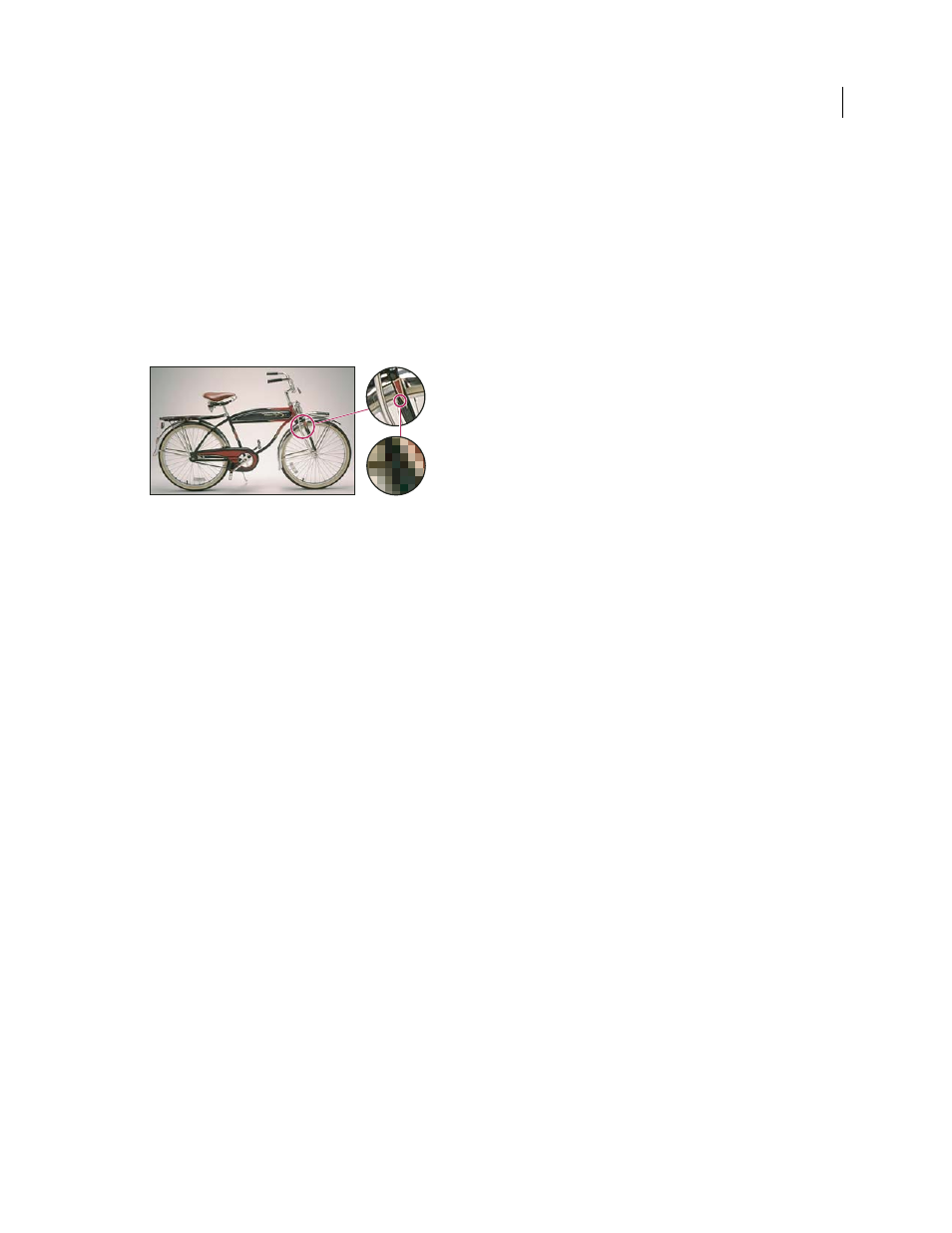About bitmap images, Image resolution guidelines for final output – Adobe InDesign CS4 User Manual
Page 355

347
USING INDESIGN CS4
Graphics
About bitmap images
Bitmap images—technically called raster images—use a rectangular grid of picture elements (pixels) to represent
images. Each pixel is assigned a specific location and color value. When working with bitmap images, you edit pixels
rather than objects or shapes. Bitmap images are the most common electronic medium for continuous-tone images,
such as photographs or digital paintings, because they can more efficiently represent subtle gradations of shades and
color.
Bitmap images are resolution-dependent—that is, they contain a fixed number of pixels. As a result, they can lose detail
and appear jagged if they are scaled to high magnifications on-screen or if they are printed at a lower resolution than
they were created for.
Example of a bitmap image at different levels of magnification
Bitmap images sometimes require large amounts of storage space, and often need to be compressed to keep file sizes
down when used in certain Creative Suite components. For instance, you compress an image file in its original
application before you import it into a layout.
Note: In Adobe Illustrator, you can create bitmap effects in your artwork using effects and graphic styles.
See also
Image resolution guidelines for final output
Bitmap images contain a fixed number of pixels, usually measured in pixels per inch (ppi). An image with a high
resolution contains more, and therefore smaller, pixels than an image of the same printed dimensions with a low
resolution. For example, a 1-inch-by-1-inch image with a resolution of 72
ppi contains a total of 5184 pixels (72 pixels
wide x 72 pixels high = 5184). The same 1-inch-by-1-inch image with a resolution of 300
ppi would contain a total of
90,000 pixels.
For imported bitmap images, image resolution is determined by the source file. For bitmap effects, you can specify a
custom resolution. To determine the image resolution to use, consider the medium of final distribution for the image.
The following guidelines can help you determine your requirements for image resolution:
Commercial printing
Commercial printing requires 150 to 300
ppi (or more) images, depending on the press (dpi) and
screen frequency (lpi) you’re using; always consult your prepress service provider before making production decisions.
Because commercial printing requires large, high-resolution images, which take more time to display while you’re
working with them, you may want to use low-resolution versions for layout and then replace them with high-
resolution versions at print time.
In Illustrator and InDesign, you can work with low resolution versions by using the Links panel. In InDesign you can
choose either Typical or Fast Display from the View
> Display Performance menu; in Illustrator you can choose
View
> Outline, or change settings in the Display Performances preferences. Alternatively, if your service provider
supports Open Prepress Interface (OPI), they may provide low-resolution images to you.
24:1
3:1
Updated 18 June 2009
